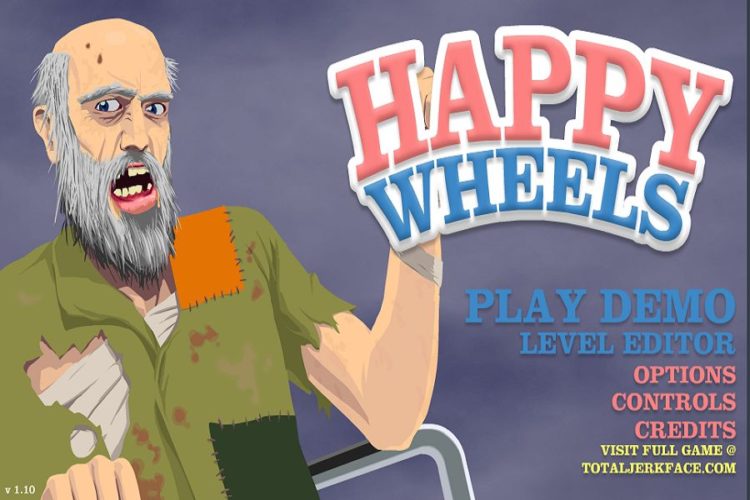Mainstream
In Defence of GTA V’s Driving Mechanics

 The Internet has been aflame with chatter about GTA V since long before the game was released. A big part of the discussion currently seems to be centered on the driving and vehicle destruction in the game. GTA IV’s handling was a big point of contention when it released in 2008 too. Cars drove realistically and suspension acted like real suspension, with the cars rocking back and forth as you navigated the streets, alleys and overpasses of Liberty City. Many players were turned off by this and added it to the pool of complaints about GTA IV being too gritty and realistic. Five years later, GTA V has, in the eyes of many, committed sacrilege by making cars much easier to control. Almost all cars turn much easier with much more grip on the roads, and a lot of people are upset by this.
The Internet has been aflame with chatter about GTA V since long before the game was released. A big part of the discussion currently seems to be centered on the driving and vehicle destruction in the game. GTA IV’s handling was a big point of contention when it released in 2008 too. Cars drove realistically and suspension acted like real suspension, with the cars rocking back and forth as you navigated the streets, alleys and overpasses of Liberty City. Many players were turned off by this and added it to the pool of complaints about GTA IV being too gritty and realistic. Five years later, GTA V has, in the eyes of many, committed sacrilege by making cars much easier to control. Almost all cars turn much easier with much more grip on the roads, and a lot of people are upset by this.
In GTA IV, acceleration was pretty slow across the board and vehicles like vans and trucks took ages to build up to a decent speed. However, once people got used to the driving many of them were total converts, praising the ‘holy handbrake’ and learning how to drift around the city in even the most sluggish people-carriers, without crashing or losing momentum. A big crash would do a huge amount of damage to your car and those that you hit. It made chases and getaways a real challenge where you had to think about how you were going to approach each intersection, corner and narrow alley. Playing GTA IV, I once went rocketing down the road underneath a bridge. I saw that there was a wall up ahead with three or four homeless people standing around, so I slammed the handbrake on and pulled the car to the right. My car rotated 90 degrees but continued on its previous course with pretty much the same amount of speed. My momentum led to me slamming full on into the homeless people with the broadside of my car, crushing them against the wall and presumably liquefying their insides. My windows were smashed, a door fell off and the car was covered in blood. As macabre as it sounds, it was brilliant.
In GTA V that same scenario would play out very differently. The car would still slide but for nowhere near as long, gripping the road surface much more readily and allowing me to slide around the corner with considerably greater ease. Playing as Franklin and using his special ability would have made the turn absolutely trivial. Even if the collision had happened it is unlikely that as much damage would have been taken. A lot of people think that this is a very bad thing. I personally think that the driving in GTA V fits perfectly with the rest of the game, though I do miss a couple of things about the old mechanics.
GTA IV was a gritty game set in a (relatively) gritty world with gritty characters and a fairly deep, depressing story. The driving fit the theme and atmosphere. GTA V has a much brighter world with much of what goes on being altogether larger than life. The Vinewood influence is everywhere in Los Santos and the game borrows a huge amount from the language of film to realise its vision. It’s a land of fakery and lies hidden behind a shiny veneer, with authenticity in short supply. Michael cruising around in his rip-off Audi S4 with racing suspension and and all the performance upgrades feels perfect – it feels like he is in control – the star of his own movie. In GTA IV Niko was new to the town and had very little choice about the direction his life went in. The driving made you feel like you were constantly wrestling for control, just like Niko was throughout the game. This sense of control and movie-like flashiness extends to Michael and Franklin’s special abilities, allowing them to slow down time – an extremely unrealistic mechanic. But it works.
The world is also much, much larger than that of GTA IV. This makes the changes to vehicle handling in GTA V desirable and, in my opinion, necessary. I don’t believe that cruising around downtown Los Santos would have felt right if cars handled like they did in GTA IV – the relentless realism would have made getting around much slower and more difficult and would have made the characters seem considerably less like bad-ass action stars. The police response to your actions has also been ramped up – cops are much more accurate, deadly, intelligent and aggressive than in GTA IV, where they were generally imbeciles in uniform. The increased responsiveness of vehicle handling means that you still have a chance against the police, though I personally find myself surviving chases significantly less frequently than in GTA IV. The old driving mechanics combined with the improved police would have left you with almost no hope of escape from even a 3 star wanted level.
Interestingly, heavier cars are relatively unchanged from GTA IV, meaning that Trevor’s adventures in Blaine County retain some of that wild lack of control. However, mentions of the countryside bring me to my biggest gripe with GTA V’s driving – off-roading. It is incredibly fun, but it is just a little too easy. I don’t think you should be able to drive a sports car up the side of Mount Chilliad without off-road tyres and high suspension, if at all. It takes a bit too much to much to fall off of dirt-bikes and mountain bikes and players can take ridiculous falls with nothing but front suspension and their crotches to cushion the blow. It is fun, bit maybe it’s just a little too wacky for its own good.
My other gripe is about the damage. The extent to which vehicles deform is actually a little improved upon from GTA IV in my opinion, but it takes too much to cause that damage. This is most notable with head-on collisions, especially when you T-bone another vehicle at high speeds. Chances are your bumper will fall off and maybe one of their doors will cave in or drop off, but that’s about the extent of the damage. If you hit someone at an angle then things are better, but driving away almost unscathed from a 100 MPH collision with an SUV feels a bit silly and damages immersion.
Overall though, I am happy to defend what Rockstar has done with the driving – ultimately because it is just huge amounts of fun, and the fundamental mechanics are relatively unchanged from GTA IV. It enables anyone to have Hollywood chases even if they couldn’t stop driving into lamp-posts in GTA IV, making one of the most fun parts of GTA accessible to a wider audience. There is still a lot of skill involved in smoothly navigating San Andreas and room for advanced players to pull off some incredible maneuvers, but the driving no longer isolates less skilled gamers. After all, games are supposed to be fun, and you would be hard pressed to find a game as fun as GTA V.
Gaming News
Best Usenet Newsgroups for Gaming

Usenet newsgroups may seem old-fashioned to many. In reality, they are the perfect place for players who love the classics but are always open to new games and strategies. These internet communities are also ideal for those searching for gaming material, solutions to issues, or a conversation related to their favorite video games. Whether you are an experienced player or entering this domain for the first time, Usenet holds a ton of resources that could change how you interact with the gaming world.
Understanding Usenet Newsgroups
Usenet newsgroups, which include gaming groups, are like message boards. People can post messages and articles in different categories. Each group is a special place for certain topics – this makes it simple to find the subjects you want to read about most. The unique characteristic of Usenet lies in its decentralized structure. This permits a much more open interchange of details and information than what is seen on regular social media platforms or forums.
Initially, Usenet was utilized only for academic and professional exchanges. However, it soon turned into a prevalent method for communicating among hobbyists and gaming groups. Presently, even though Usenet has been surpassed by newer platforms in terms of popularity, it continues to be an important tool for knowledgeable users who value its special mix of staying anonymous with fast communication. Knowledgeable users also love access to vast archives containing historical information and software applications that are no longer available elsewhere on the Internet.
Top Usenet Newsgroups for Mobile Games
comp.mobile.games
This is a fresh group dedicated to discussions about mobile games and related technology matters within the industry. Here, you can find conversations about the coding aspects of creating games for mobile devices, like new updates in platforms or fresh game engines being used for development purposes.
rec.games.mobile
The perfect place for people who play games on their mobile devices as a hobby. Here, users talk about strategies, tricks and discuss game evaluations. This group is also suitable for those who are not serious gamers but like to connect with others and discuss playing strategies.
alt.games.mobile
In this newsgroup, users often discuss gaming fixes and give each other suggestions. It is also the go-to place for gamers and die-hard fans that wish to find each and every detail of the game they love to play.
Best Newsgroups for Video Game Discussions
Newsgroups such as alt.games.video and rec.games.video.arcade have lively communities where gamers often engage in exchanges and conversations. These forums are not only for resolving gaming issues or writing reviews; they are centers of enthusiastic discussion regarding gaming culture, strategy, and creation process. Be it the latest RPGs, energetic shooters or old-school arcade games – there is always a thread bustling with discussion.
In these threads, not only will you encounter a variety of views from across the globe, but you may also land on gaming tricks and shortcuts that are lesser known. For those who are new, remember that every group has its own tone and rules. Lurking for a while should help you understand community norms and ensure your contributions are accepted.
Specialized Gaming Newsgroups
Specialized newsgroups are designed for particular gaming communities. They provide a discussion environment that is more centered and focused. These groups are ideal for users who really love a particular game and want to explore it in great depth.
The benefit of these specific groups is their collection of very particular details. Gamers who are part of such a group often exchange unique things like custom mods or skins, and offer advice on how to make gameplay more efficient and fun.
Tips for Using Usenet Newsgroups for Gaming
To enter Usenet, you will first need to pick a provider that is well-known for security, high retention rates and fast speed. To make the right pick, it is a good idea to get the rankings for the best Usenet providers. Next, get advanced newsreader software, as this will allow you to browse through newsgroups easily and manage your activities effectively.
Focus on newsgroups related to gaming and participate in discussions matching your interests to find gaming buddies. Also, make sure that you follow the netiquette of each group while doing so. Utilize newsreader software functions like filters and automation to keep things simple.
Conclusion
Usenet, at first sight, can appear as a choice for oldies or people that have not yet acclimated to social media platforms and forums. However, its distinct characteristics make it very useful for all kinds of gamers. If you are searching for uncommon information, looking for detailed conversations or wish to join a community that matches with your specific interests; Usenet is surely the place for you. Jump in to see how Usenet can add another element of fun to your gaming experiences!
Casual
Encouraging Growth and Motivation: Resources for Child Development

Child development is a complex journey marked by critical milestones where each stride forward builds upon the foundation of the previous one. Acknowledging children’s individual needs, pediatric therapy services tailor strategies to foster physical, emotional, and cognitive growth. To support this transformative process, environments that prompt curiosity and engagement, coupled with advanced educational tools, play an instrumental role in shaping young minds. These resources, carefully selected and applied, can significantly amplify a child’s developmental trajectory. Keep reading to learn about the effective ways these tools and techniques can aid in advancing childhood milestones.
Pediatric Therapy Services: Enhancing Developmental Milestones
Pediatric therapy services support children as they reach and surpass developmental milestones. These services, often provided by skilled therapists, address various growth challenges, ensuring each child has the best possible start in life. From speech and occupational therapy to physical and behavioral interventions, these professionals tailor their approach to meet the unique needs of every young patient.
Therapists work relentlessly to motivate children, fostering an environment where milestones are not merely achieved but celebrated. Through personalized, one-on-one sessions, children gain the confidence and skills necessary to navigate their developmental journeys more easily. The trust between therapist and child is a solid foundation for consistent progress and paves the path for lifelong learning and adaptation.
Resource provision is a key component of pediatric therapy, equipping parents with the tools to continue therapy practices at home. Effective communication between therapists and families ensures a cohesive strategy that envelops the child’s daily routine, enhancing the therapy’s impact. It also allows parents to identify subtle progress, reinforcing their pivotal role in the child’s developmental success.
If you’re looking for pediatric therapy in your area, a simple Google search like “pediatric therapy Arizona” will help you find local providers and services tailored to your child’s needs, ensuring they receive the specialized care necessary for their development.
Optimizing Play Spaces: Creating Environments for Learning and Exploration
Optimized play spaces are vital platforms where children engage with their world, build skills, and unleash their creativity. Designers of such areas pay astute attention to elements that promote safe exploration and intellectual stimulation. A thoughtfully arranged play environment serves as a place of entertainment and a crucible for burgeoning development.
Professionals incorporate a variety of tactile and visual stimuli within play areas to cater to diverse developmental needs and interests. Stimulating sensory experiences is central to cognitive and motor skill refinement among younger populations. The intentional selection of colors, textures, and interactive features sparks curiosity and encourages physical activity, which is fundamental to healthy growth.
Accessibility remains paramount in creating play spaces, ensuring they cater to children across all abilities. Including adaptive resources within these environments demonstrates a commitment to inclusive development, allowing every child to participate and benefit from the joy and learning play offers. Such inclusiveness fosters a sense of community and belonging, which is essential for emotional and social development.
Affording children autonomy in their play advances self-directed learning and problem-solving capabilities. When children feel empowered to make choices within their play, they better understand their preferences and abilities, setting the stage for confidence and self-awareness — qualities that are instrumental as children grow and transition through life’s stages.
Additionally, incorporating elements like fake plants or outdoor plants from retailers like Nearly Natural outdoor plants into play spaces can enhance children’s sensory and aesthetic experience.
Interactive Learning Tools: Technology and Resources for Cognitive Development
Interactive learning tools harness technology’s power to solidify children’s cognitive development. These digital resources provide an array of engaging, educational content that aligns with critical thinking and problem-solving skills.
Software and applications designed for children’s learning capitalize on the allure of multimedia to capture young minds. Effective education solutions provide children with stimulating challenges that are age-appropriate and aligned with developmental targets.
The discerning use of educational technology in classrooms and homes can reinforce concepts and skills taught through traditional methods. It creates a harmonious blend of instruction and interactive play, thereby cementing a child’s understanding and retention of information.
Providers of such educational platforms are ever vigilant, updating content to reflect new educational strategies and the latest academic research. Thus, children equipped with these technological tools remain at the vanguard of current learning methodologies, all while engrossed in fun and dynamic ways.
Overall, caregivers and educators can provide comprehensive support for children’s developmental journeys by integrating pediatric therapy services, optimized play spaces, and interactive learning tools. These resources nurture their physical, emotional, and cognitive growth and cultivate a lifelong love for learning and exploration.
Features
Why Investing in Academics Is Investing in Yourself

The quest for knowledge and self-improvement through academic pursuits is more than just a milestone in life; it is a cornerstone of personal development and success. Committing resources to further education is not merely an expense; it is an investment with considerable returns that extend far beyond the classroom. Education equips us with the tools required to navigate an increasingly complex world, opening doors to opportunities and fostering personal growth. Keep reading to discover why allocating time and resources to your academics is a decision that pays dividends for a lifetime.
The Lifelong Returns of Investing in Your Education
Investing in education is akin to planting seeds that blossom into numerous opportunities. Beyond financial gains, education forms the bedrock for career success and personal fulfillment. It empowers individuals to pursue their passions, enhances job satisfaction, and boosts self-esteem through academic achievements. Education serves as a catalyst for social mobility, breaking cycles of poverty by equipping people with the skills needed to improve their lives and contribute positively to society.
This ripple effect extends to lower crime rates and increased civic engagement, benefiting communities at large. Beginning with scholarships for high school sophomores can provide the initial support needed to embark on this transformative journey. These opportunities signify a commitment to nurturing future leaders and fostering a culture of lifelong learning and achievement.
Personal Growth and Lifelong Learning Through Education
Education is a vital aspect of personal development, providing opportunities for growth, character building, and discovering passions and capabilities. It fosters resilience and adaptability, which are essential in all aspects of life. A strong educational foundation encourages lifelong learning, ensuring individuals remain relevant and proactive in their professional and personal lives.
Education also broadens perspectives, exposing individuals to diverse ideas, cultures, and worldviews, fostering empathy, cross-cultural understanding, and appreciation for the human experience. It also allows for critical assessment and engagement with the world from an informed standpoint. The journey through academia often involves self-discovery, helping students uncover their strengths, weaknesses, interests, and values, leading to a more fulfilled life with aligned choices and goals.
Expanding Your Horizons: The Social Benefits of Academics
Academic investment in education is about building social capital through interactions with peers, faculty, and industry professionals. These interactions foster communication skills and relationships, which are crucial for life stages. Extracurricular activities in academic settings provide platforms for students to express themselves, learn new skills, and take on leadership roles.
Collaborative projects and team-based assignments teach students the importance of teamwork, compromise, and collective pursuit of goals. Higher education institutions also serve as a microcosm of society, requiring social awareness and finesse to navigate the diverse cultural, economic, and ideological perspectives.
How Academic Achievement Propels Professional Success
Professional success often hinges on a blend of experiences and achievements, with academic accomplishments playing a crucial role. Excelling in academia fosters a strong work ethic and sharp time-management skills, highly valued in today’s job market. Employers frequently use academic credentials to gauge candidates, especially for specialized roles like those requiring an aa in paralegal studies, where in-depth knowledge is pivotal.
Moreover, higher education equips individuals with specialized knowledge and technical skills that are indispensable in complex roles. Critical thinking and problem-solving abilities, nurtured during academic pursuits, further enhance one’s capacity to tackle challenges creatively. The networks formed during academic years often open doors to valuable career opportunities through mentorships and connections.
Leveraging Educational Investments for Career Advancement Opportunities
Investing in education can significantly impact career advancement, as academic qualifications often lead to promotions, leadership roles, and exclusive professional circles. Continuous education can lead to specialized career paths with higher salaries and statuses, especially in evolving fields. Higher education institutions offer career services like resume-building workshops and job placement programs to help students transition from academia to the workforce effectively.
For those already in the workforce, further education can be a strategic move for career change or progression, with flexible online programs and part-time options allowing working professionals to pursue additional qualifications while maintaining their current positions.
Altogether, the investment in academics is a far-reaching decision that impacts not just your immediate circumstances, but your future potential. As you prioritize your academic pursuits, you build a stronger foundation for success in every aspect of life—professionally, personally, and socially.
-

 Guides4 years ago
Guides4 years ago6 Proven Ways to Get more Instagram Likes on your Business Account
-

 Mainstream9 years ago
Mainstream9 years agoBioWare: Mass Effect 4 to Benefit From Dropping Last-Gen, Will Not Share Template With Dragon Age: Inquisition
-

 Casual8 months ago
Casual8 months ago8 Ways to Fix Over-Extrusion and Under-Extrusion in 3D Printing
-

 Guides5 months ago
Guides5 months agoExplore 15 Most Popular Poki Games
-

 Guides1 year ago
Guides1 year agoGan Rubik’s Cube vs. Traditional Rubik’s Cube: Key Differences and Advantages
-

 Uncategorized3 years ago
Uncategorized3 years agoTips To Compose a Technical Essay
-

 iOS Games1 year ago
iOS Games1 year agoThe Benefits of Mobile Apps for Gaming: How They Enhance the Gaming Experience
-

 Mainstream11 years ago
Mainstream11 years agoGuild Wars 2: The eSports Dream and the sPvP Tragedy






